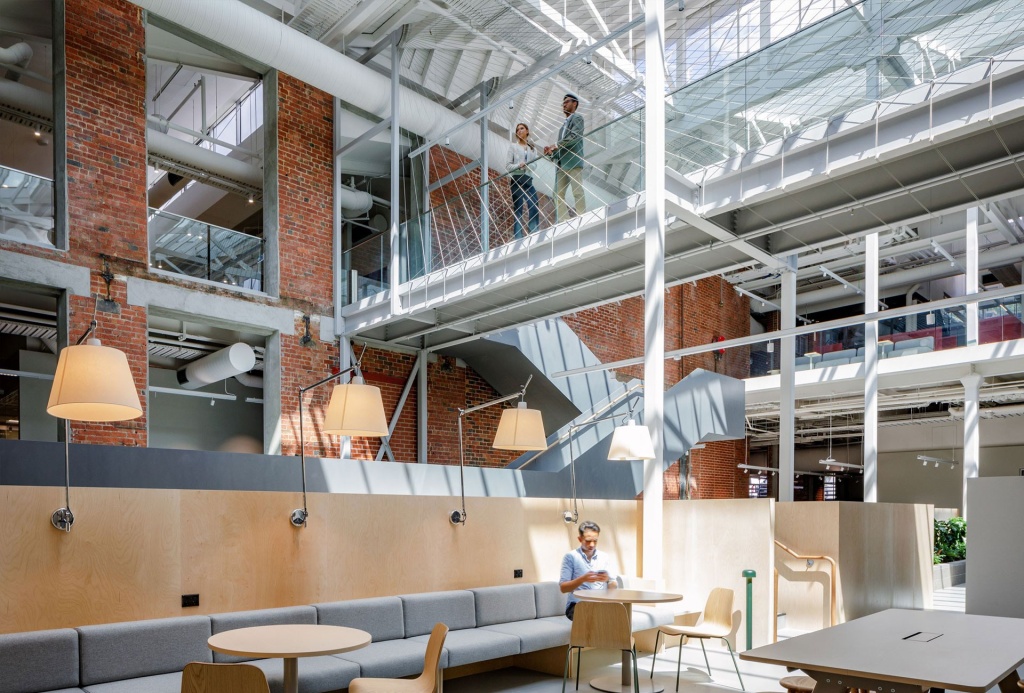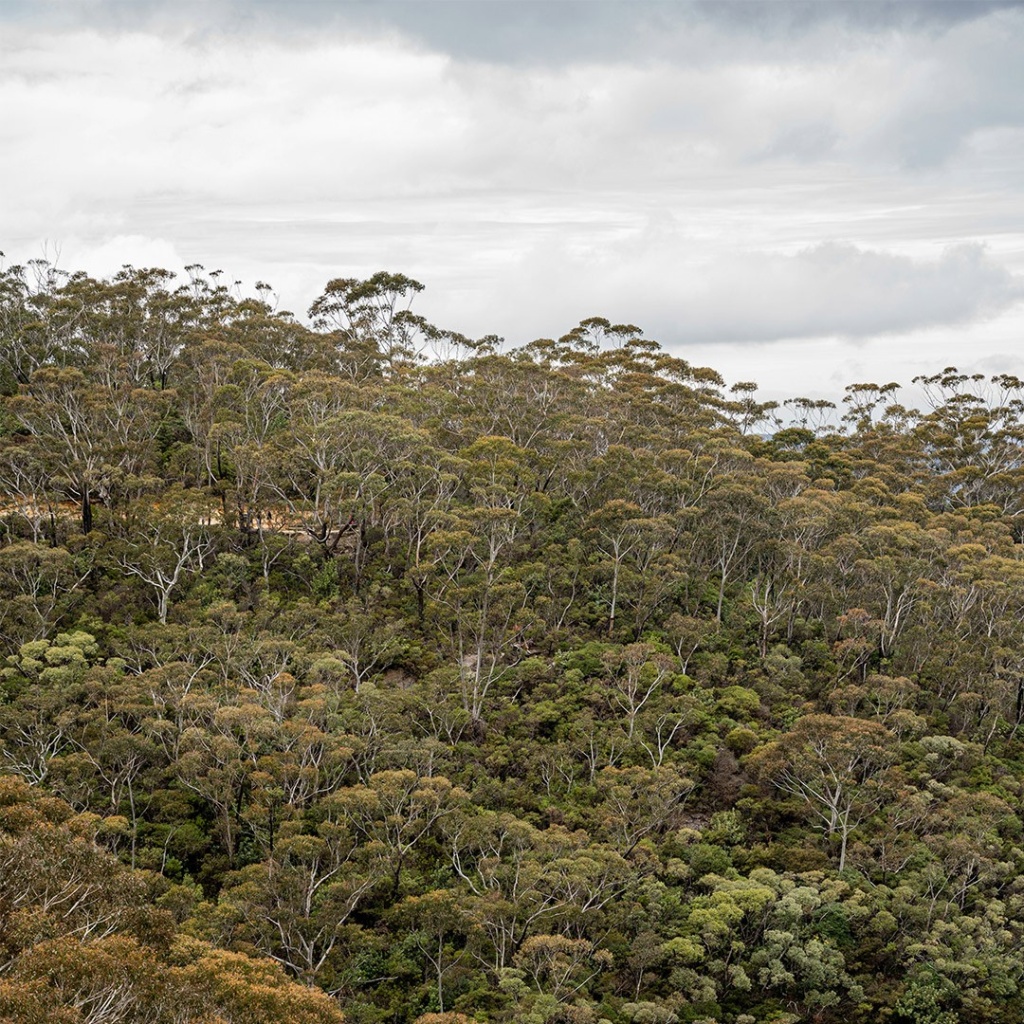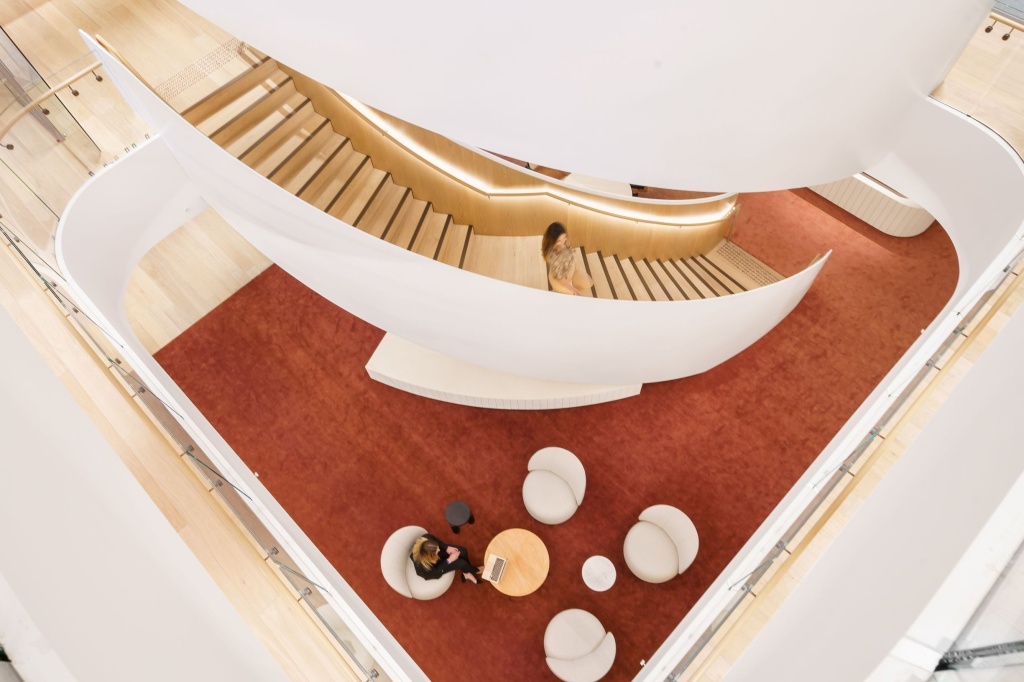Back to articles
- Staircase /
- Spiral /
- Steel
The Art of the Spiral: Designing Impactful Commercial Staircases
Key Considerations for Spiral Stair Design
A spiral’s compact form is one of its biggest advantages, but proportions matter. Tread width, rise, balustrade height, and handrail continuity must work together to ensure safe and comfortable movement for all users. In commercial buildings, where stairs may be used by large groups or people with varying mobility, this careful attention to detail is critical.
This full-turn spiral staircase exemplifies this balance. Standing over 7 meters tall with a diameter of more than 5 meters, the steel-plate structure connects three levels while occupying minimal floor space. Through early design collaboration with Bates Smart and project stakeholders, Asentis developed a staircase that prioritised both safety and comfort, with meticulously calculated tread widths, rise, and handrail placement. The result is a staircase that functions seamlessly for everyday use while maintaining its role as a striking sculptural centrepiece in the heart of Sydney’s CBD.
Consider how often the stair will be used and by whom. Daily-use stairs require comfortable geometry that supports steady circulation, while feature spirals can adopt tighter radii and sculptural forms that prioritise visual impact over speed. Understanding how the space will be used informs the balance between practicality and drama.
The central spiral staircase elegantly demonstrates this principle. Connecting levels 10 and 11, it encourages interaction and movement, drawing people together around the library wall and meeting zones on the lower floor while guiding them to the upper level with sweeping views of Canberra’s mountains. Designed for frequent use, the stair combines gentle proportions with a sculptural presence, ensuring staff can move comfortably throughout the space without compromising its role as a striking architectural feature.
Commercial environments demand finishes that hold up over time. Non-slip surfaces, rigid treads, and hard-wearing materials reduce maintenance while maintaining the design intent. Colour, texture, and finish can also be used to enhance the visual impact, transforming a functional element into a sculptural feature.
Fashion House Headquarters, Sydney:
The helical staircase at this Fashion House HQ exemplifies this balance of durability and design. Marble treads provide a robust, long-lasting surface suitable for daily use, while golden brass handrails offer both strength and elegance. Every detail was carefully considered to ensure the staircase not only withstands the demands of a busy office environment but also reinforces the luxury brand’s identity. Through meticulous selection of finishes and materials, the stair becomes both a functional connector and a statement piece, reflecting the modern classic spirit of this iconic brand.
Spiral stairs must meet the National Construction Code (NCC) and relevant Australian Standards for structural performance, accessibility, fire safety, and fall protection. Close collaboration between design, engineering, and fabrication teams ensures that a stair is not only beautiful but performs safely under daily use.
The sweeping curved staircase at 80 Collins Street exemplifies this careful engineering. Crafted from curved steel plates and finished with warm timber handrails, the stair was designed to comply with all structural, accessibility, and safety requirements while seamlessly integrating into the three-level workplace. By collaborating closely with architects and project stakeholders, Asentis delivered a staircase that is structurally sound, fully compliant, and a graceful centrepiece that encourages movement, connection, and interaction across the office.
Where Function Meets Artistry
Related News
- Design Steps
Purposeful Work: Our Five Principles of Intentional Workplace Design
Purposeful design shapes how people move, connect, focus, and feel — supporting culture, producti...
- Stair Studies
The Future of Stairs: Adapting to the Modern Workplace
In today’s evolving workplace and urban environments, the humble staircase is undergoing a remark...
- Staircase Series
Curved Staircases: A Bold Statement in Architectural Elegance
Curved staircases add elegance and flow to any space, blending functionality with artistry. Their...










